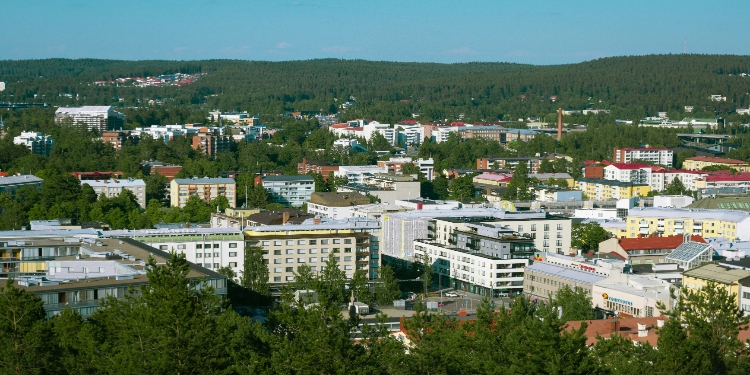Urban areas today face significant challenges related to space constraints and sustainability. Modular systems have emerged as effective solutions to these issues, promoting both efficient construction and environmental responsibility.
As cities continue to expand, the demand for innovative construction methods that address spatial limitations and sustainability concerns has grown. Hoarding for construction plays a crucial role in this context by establishing clear worksite boundaries, ensuring safety, and facilitating organised development processes. These modular solutions offer a flexible and adaptable approach to modern urban challenges, supporting the creation of sustainable infrastructures.
Modular systems in urban development
Modular systems have become increasingly popular due to their ability to provide scalable and sustainable solutions for urban projects. By using prefabricated components, these systems significantly reduce construction times and minimise on-site disruptions. This approach aligns perfectly with the demands of modern urbanisation, where time and space are often limited resources. The adaptability of modular designs allows them to be tailored to specific project needs, offering versatility that traditional methods may lack.
Beyond construction efficiency, modular systems contribute to reduced waste generation and lower carbon emissions, essential factors in promoting sustainable development practices. Additionally, the precision manufacturing involved in modular construction enhances quality control, resulting in durable structures that meet high safety standards. As more cities adopt these systems, their impact on urban landscapes becomes increasingly evident.
The cost-effectiveness of modular systems further boosts their popularity. Reduced labour requirements and faster project completion times translate into significant financial savings for developers. This economic advantage makes modular solutions an attractive option for both public and private sectors aiming to optimise their construction budgets while adhering to sustainability goals.
The importance of hoarding in development
Hoarding is essential for ensuring the safety and organisation of urban construction sites. By establishing clear boundaries around worksites, hoarding solutions protect both workers and the public from potential hazards associated with ongoing construction activities. These barriers are crucial in maintaining orderly project execution, particularly in densely populated areas where space is at a premium.
Implementing hoarding not only enhances safety but also contributes to a streamlined construction process. By clearly delineating work zones, it facilitates better site management and reduces the likelihood of unauthorised access or interference. This level of control is indispensable for maintaining operational efficiency and adhering to project timelines.
Modern hoarding systems are designed with sustainability in mind, offering recyclable materials that align with eco-friendly construction practices. This focus on environmental responsibility ensures that while projects progress smoothly, they do so with minimal ecological impact. As awareness of sustainable building practices grows, so too does the demand for innovative hoarding solutions that meet these evolving standards.
Establishing clear boundaries in urban projects
Establishing clear boundaries through effective hoarding is vital for maintaining order and safety within urban development projects. These boundaries serve as physical demarcations that help manage site access and ensure that only authorised personnel are present within the work area. This control is critical for preventing accidents and safeguarding both workers and the general public.
In addition to their safety benefits, clear boundaries also play a key role in enhancing project organisation. By providing a structured framework within which work can proceed, they help manage logistics more effectively, allowing for smoother coordination between different teams involved in a project. This organisational advantage is particularly important in complex urban developments where multiple contractors may be operating simultaneously.
The strategic use of hoarding also supports communication efforts by offering surfaces for posting essential information such as safety guidelines or project timelines. This visibility helps keep all stakeholders informed and engaged throughout the development process, fostering collaboration and transparency.
Sustainable contributions through innovative solutions
Innovative hoarding solutions significantly contribute to sustainable urban development by integrating environmental considerations into traditional construction practices. The use of recyclable materials in hoarding systems underscores this commitment to sustainability, ensuring that projects leave minimal ecological footprints while achieving their objectives efficiently.
The adaptability of modular solutions allows them to be reused across multiple projects, further enhancing their environmental benefits by reducing material consumption over time. This practice not only conserves resources but also provides economic advantages by lowering overall material costs for developers who choose sustainable approaches.
By embracing these innovative solutions, urban developers play a pivotal role in shaping future landscapes that prioritise both functionality and ecological responsibility. As cities continue to evolve, the importance of adopting forward-thinking strategies like modular systems and sustainable hoarding will only grow stronger.
David Prior
David Prior is the editor of Today News, responsible for the overall editorial strategy. He is an NCTJ-qualified journalist with over 20 years’ experience, and is also editor of the award-winning hyperlocal news title Altrincham Today. His LinkedIn profile is here.












































































